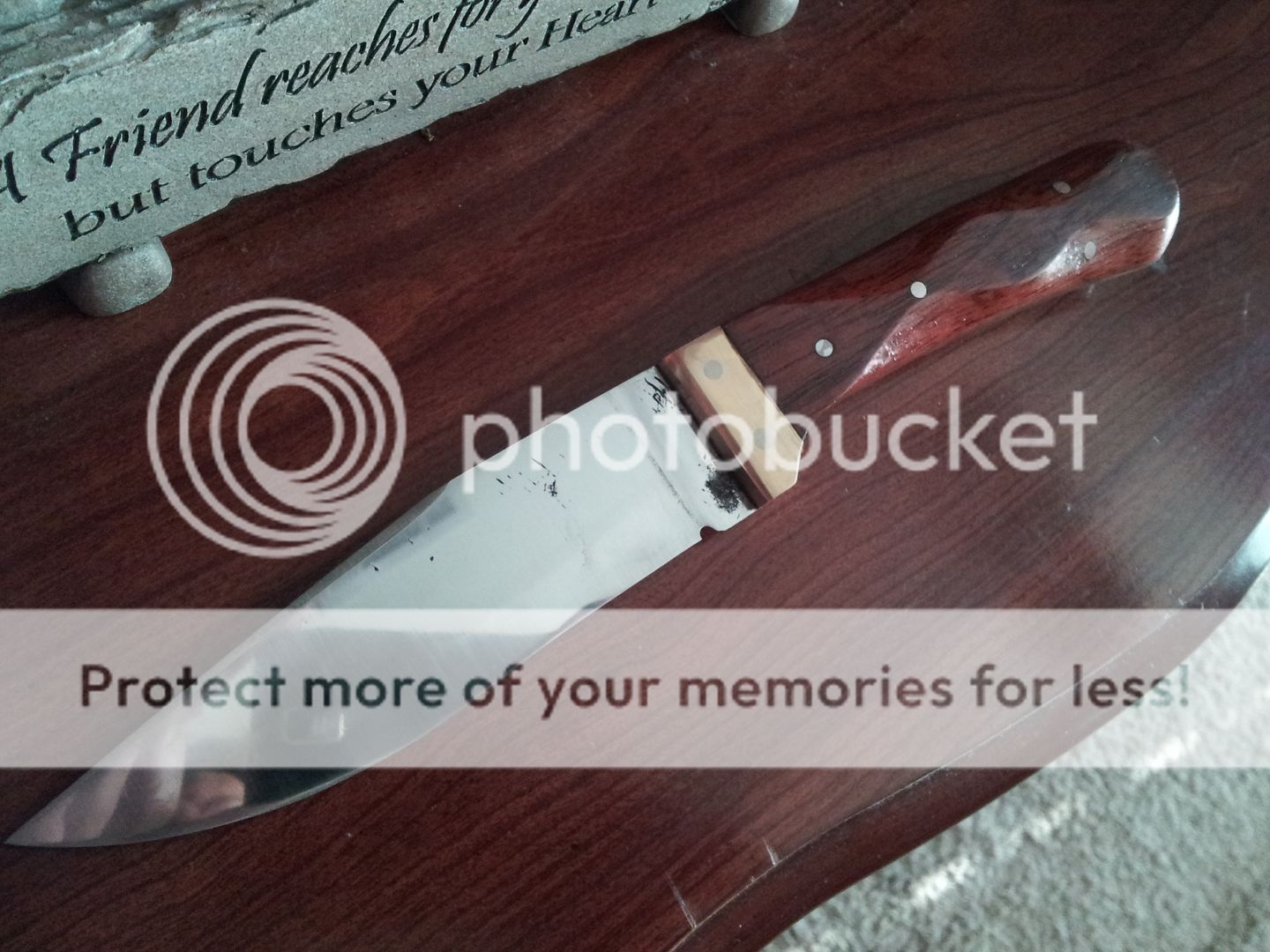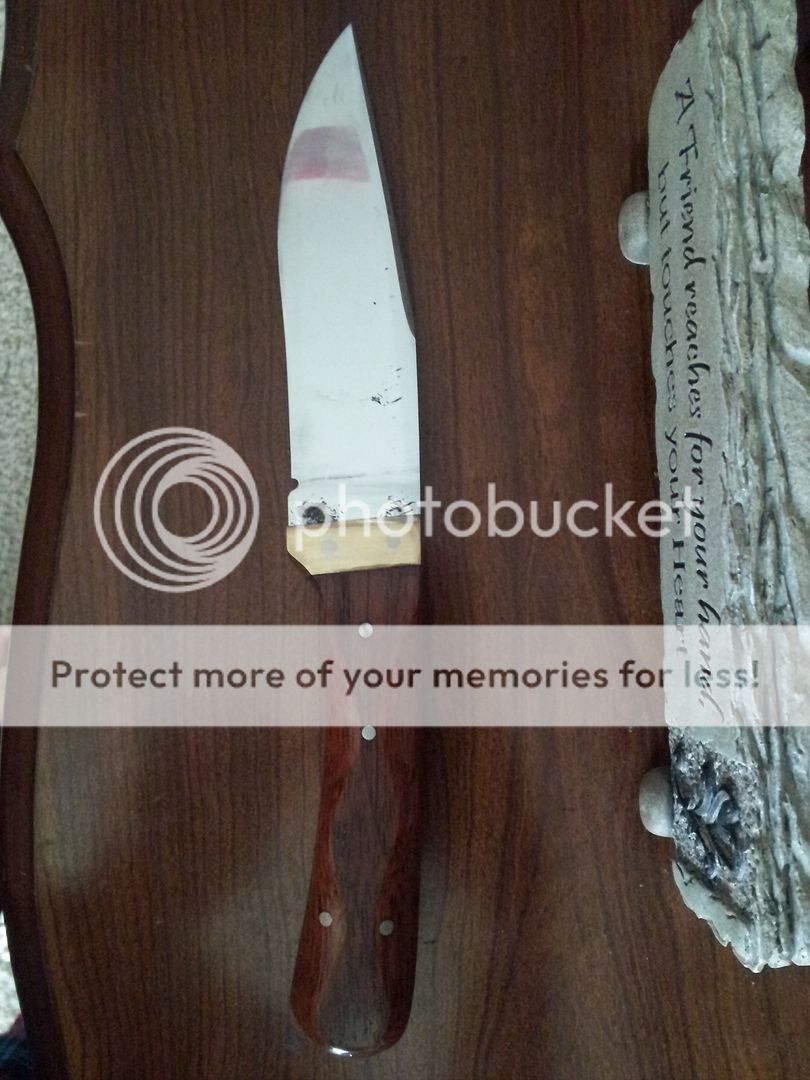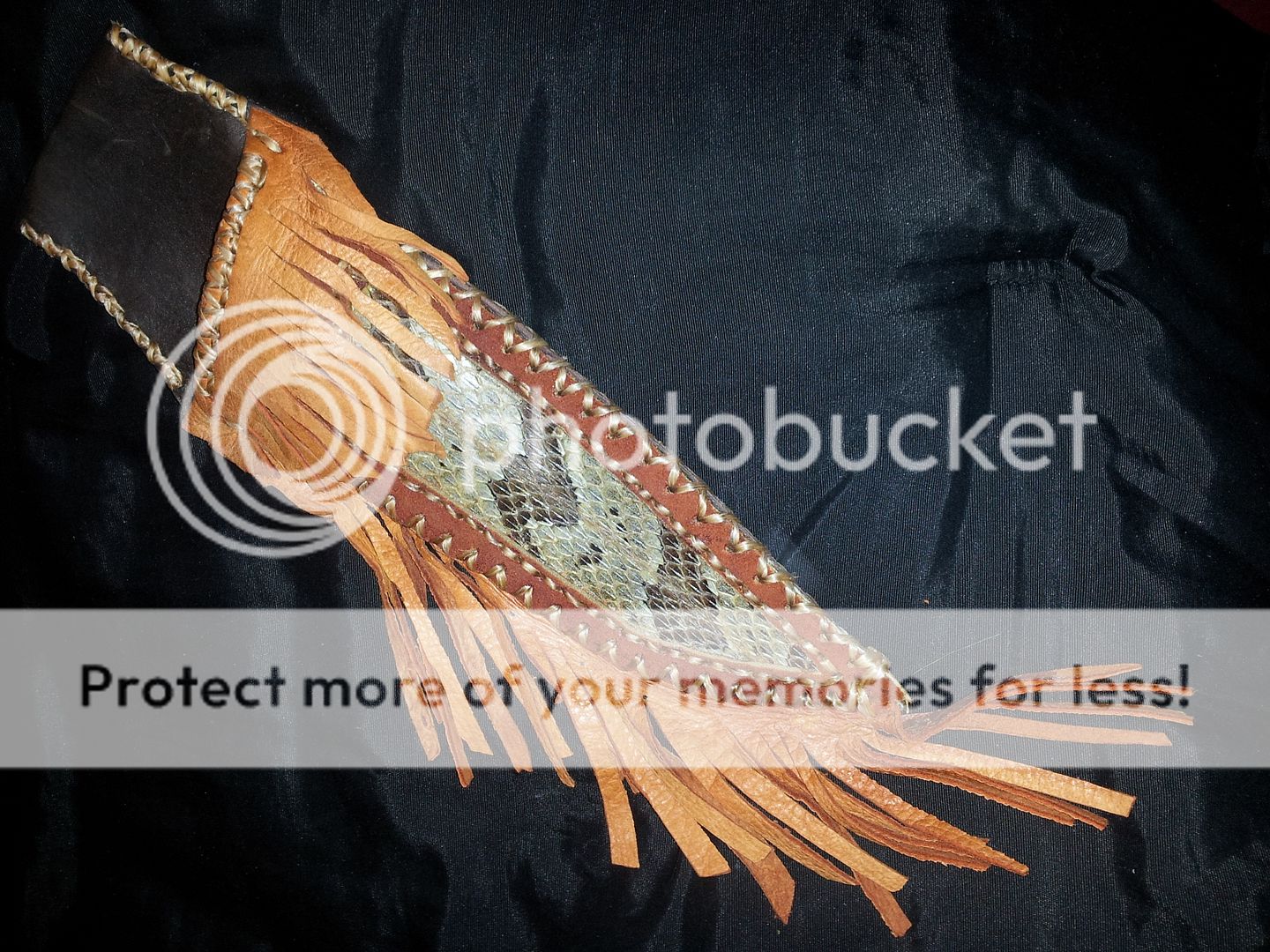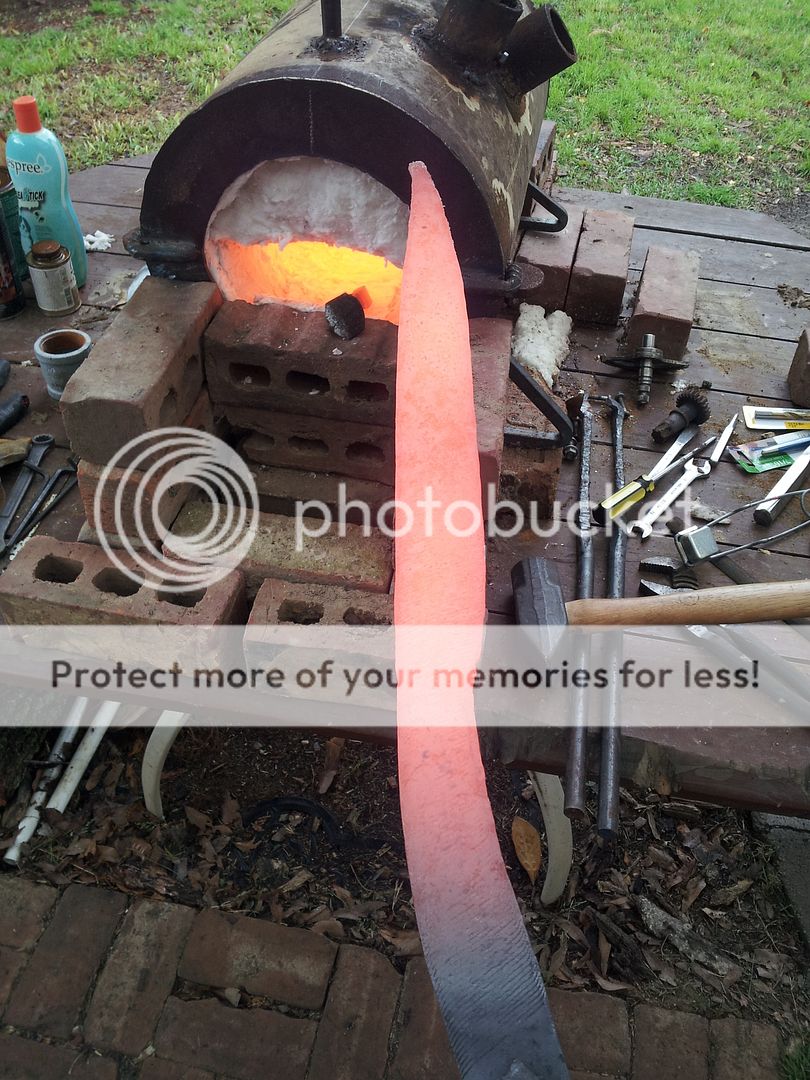Hi, This is my first post to Bladeforums and my first attempt at a knife from a rasp. I do not claim any expertise (or much experience for that matter) but my lifelong love of knives has lead me to try making a few of my own. Being that my father is a farrier I had some of the basic materials available to me to use. Over his years of work he has more spare rasps than he knows what to do with; they just sit in a pile among thousands of horseshoes. So I decided to see what I could come up with.

This is the forge setup I used
After a couple hours of banging the file teeth began to flatten and I started to get a rough shape of how I wanted it. (sorry no pics till after) The curved handle started to take its shape and I began to draw out the blade, careful to keep the blade hot while it thinned out. I then heated the handle of the knife and stuck it in a couple cinderblocks filled with ash to anneal

Before tempering I shaped, ground the basic convex edge, and drilled holes for the pins which hold the handle scales in place.
Now before you all critique my methods let it be known that I had little knowledge of that I was doing and was mainly referencing youtube videos. That being said I heated the blade as evenly as I could until it was about the color of a #2 pencil. It did not stick to a magnet. Concerned with the amount of slag (if that is what it is called) on the blade I decided to give it a quick scrape with the wire brush. BAD IDEA. the blade bent so badly I had to spend another 10 minutes straightening that thing out.
finally I was able to successfully quench without warping the blade. After cleaning it up a little with some sandpaper I was delighted to see that the scale pattern was even more pronounced than before. However, there is this "bubbled" texture to the blade if you look closely and I am still unsure what caused it. Possibly overheating? After this I threw it in the oven at 350 for about an hour (again referencing youtube) and called it quits as far as heating goes.
the pins went in well and the holes in the maple lined up well for the most part, While epoxy-ing I ended up cracking the maple handle by trying to force one of the pins into place with a misaligned hole. This will probably haunt me for as long as I keep this handle. I have thought of replacing the maple for some Indian satinwood I nabbed from my shop teacher one year. Really tight grain, awesome looking stuff.


All in all I am fairly happy with how it turned out, I was able to put a sharp edge on it and it has held it well. I still have yet to put this knife through its paces but I have not seen anything (handle aside) that would warrant catastrophic failure.
Being new to the art of knifesmithing I encourage replies and am more than willing to learn from those with more experience with the knife making process. please, just take it easy on the new guy.

This is the forge setup I used
After a couple hours of banging the file teeth began to flatten and I started to get a rough shape of how I wanted it. (sorry no pics till after) The curved handle started to take its shape and I began to draw out the blade, careful to keep the blade hot while it thinned out. I then heated the handle of the knife and stuck it in a couple cinderblocks filled with ash to anneal

Before tempering I shaped, ground the basic convex edge, and drilled holes for the pins which hold the handle scales in place.
Now before you all critique my methods let it be known that I had little knowledge of that I was doing and was mainly referencing youtube videos. That being said I heated the blade as evenly as I could until it was about the color of a #2 pencil. It did not stick to a magnet. Concerned with the amount of slag (if that is what it is called) on the blade I decided to give it a quick scrape with the wire brush. BAD IDEA. the blade bent so badly I had to spend another 10 minutes straightening that thing out.
finally I was able to successfully quench without warping the blade. After cleaning it up a little with some sandpaper I was delighted to see that the scale pattern was even more pronounced than before. However, there is this "bubbled" texture to the blade if you look closely and I am still unsure what caused it. Possibly overheating? After this I threw it in the oven at 350 for about an hour (again referencing youtube) and called it quits as far as heating goes.
the pins went in well and the holes in the maple lined up well for the most part, While epoxy-ing I ended up cracking the maple handle by trying to force one of the pins into place with a misaligned hole. This will probably haunt me for as long as I keep this handle. I have thought of replacing the maple for some Indian satinwood I nabbed from my shop teacher one year. Really tight grain, awesome looking stuff.


All in all I am fairly happy with how it turned out, I was able to put a sharp edge on it and it has held it well. I still have yet to put this knife through its paces but I have not seen anything (handle aside) that would warrant catastrophic failure.
Being new to the art of knifesmithing I encourage replies and am more than willing to learn from those with more experience with the knife making process. please, just take it easy on the new guy.
Last edited:







